Cycling in the Pyrenees: bike riding traveller’s guide
Resident Peter Cossins shares insider tips to making the most of the climber's playground
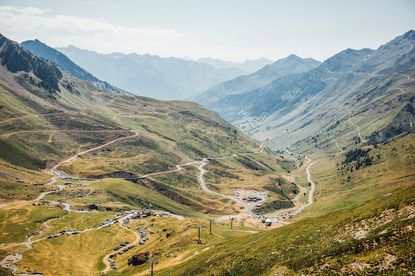
The Col du Tourmalet (Chris Catchpole)
Peter Cossins lives on the French side of the Pyrenees mountains. He's currently crowdfunding to publish a book on the area A Cyclist's Guide to the Mountains: The Pyrenees, and also has a guide to racing tips and tricks out in June called Full Gas: How to Win a Bike Race – Tactics from Inside the Peloton
After he’d won the 2004 Giro d’Italia title, Damiano Cunego switched his focus to the Tour de France, figuring that if he could thrive on the climbs in his home country he could impress just as much on those in the sport’s biggest race. What Cunego hadn’t counted on, though, was the Pyrenees, which he later described as “not like any mountains I’ve climbed before.” He further explained: “It’s hot, humid and the climbs are harder mentally than they are physically… The Pyrenees are like nothing I’ve seen or climbed before.”
Living on the French side of the chain that runs from the Atlantic to the Mediterranean, I can appreciate the point that Cunego was trying to make. In terms of height, the Pyrenean passes are mostly dwarfed by the famous ascents in the Alps and Dolomites, where the roads are generally better engineered and more regular in gradient. But find a rhythm there and you can usually stick with it.
However, in the Pyrenees, and particularly on the French side, many of the passes are routes that have been used by shepherds, traders and livestock for thousands of years, the stereotypical goat tracks covered by tarmac. Often cutting through dense, deciduous woodland, there is something other-worldly about them, a feeling frequently enhanced by the lack of traffic. Often linking one into the next, without the need – or respite! – for valley riding, the Pyrenees are the perfect playground for climbers.
Here’s how to make the best of them…
Why go to the Pyrenees?
Get The Leadout Newsletter
The latest race content, interviews, features, reviews and expert buying guides, direct to your inbox!
There’s all that Tour de France history for a start. The race first ventured into the range in 1910, with back-to-back stages that led overall winner Octave Lapize to brand the organisers “assassins”. Over the subsequent century and more, climbs like the Tourmalet, Aubisque and Peyresourde have gained legendary status, the former becoming the most visited climb on the Tour route and appearing almost every year since Lapize’s famous outburst.
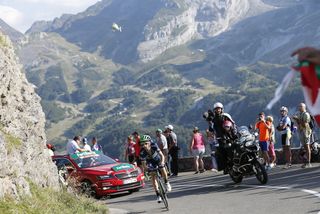
With more than 500 passes to choose from – and that’s just including those over 1,000m – there are almost limitless riding options right along the chain, particularly on the French side. Consequently, it’s easy to put together circuits to suit riders of every ability, from those riding in the mountains for the first time to much more experienced riders who want to tackle Tour-like routes.
It’s quiet. The French department of Ariège, for instance, which sits halfway between Toulouse and the mountain state of Andorra, is about half the size of Yorkshire but with less than 3 per cent of its population. Once away from the main population centres, which are all small, it’s not hard to find roads that are almost car-free.
When to go and how to get there
The lushness of the terrain on the French side of the Pyrenees testifies to the fact that the weather can be unpredictable even in the middle of summer. Affected by weather fronts coming off the Atlantic and the Mediterranean, it can also be tempestuous, so you’ve got to be prepared for anything. However, rain doesn’t tend to linger too long. While the Tour’s passage in July is the main incentive for most to visit, the months either side of this tend to be more settled, and the autumn months can be spectacularly so. Apart from Spain’s Basque Country, which is equally verdant, the other side of the range is much drier and consistently hotter.
>>> Cycling abroad: hire a bike or take your own?
As the biggest city lying close to the Pyrenees and an immensely important hub for the aeronautical industry as well, Toulouse is the best-connected airport to the UK with daily flights all year round. With lots of often very cheap car hire options available, it is little more than an hour’s drive from the nearest passes in the Ariège and Couserans. As one of France’s busiest airports, Toulouse also boasts a wide range of car hire options, with cheap rates often available, especially if booked well in advance.
>>> How to prepare for a cycling holiday or training camp
To the east of Toulouse, Carcassonne and Perpignan also have regular flights to the UK, as do Tarbes, Pau and Biarritz to the west. On the Spanish side of the massif, Girona and Bilbao are the best options, with the former now well established as a leading cycling destination thanks in large part to the proliferation in the number of professional riders who are based there.
Where to ride
While there are almost infinite possibilities, having a base in certain well-located towns opens up more of these. In France, Foix and nearby towns in the Ariège valley are ideally placed for Tour regulars such as Plateau de Beille, Ax 3 Domaines, the Port de Pailhères and the Col de Péguère, with the brutally steep Mur de Péguère on its southern flank.
Foix stands out because the terrain around it varies so much, from the flatlands around Pamiers just to the north, to rolling hills to the east, some of them topped off with spectacular Cathar castles dating back almost a thousand years, such as Roquefixade and Montségur, to the long passes to the south towards Andorra and to the west towards Saint Girons.
A town with a distinct hippy vibe, Saint-Girons, base for the illustrious Ronde de l’Isard under-23 race, is the gateway to the heavily wooded and often misty peaks of the Couserans, among them the Portet d’Aspet and Col de Menté. With no cross-border routes into Spain, these are some of the quietest roads in France, where you’re almost as likely to come across a Pyrenean chamois (as the isard is also known) as a car.

Further west, the grand spa town of Luchon de Bagnères, generally known as Luchon, has long been a Tour de France stepping stone to major cols, notably the Peyresourde, Port de Balès and ski stations such as Superbagnères. On the other side of the Peyresourde, I’ve always loved the village of Arreau, which sits at the foot of the Col d’Aspin, but the bigger town of Bagnères de Bigorre is a better option for iconic Tour ascents like the Tourmalet and Aubisque.
Over in Spain, Girona is an obvious draw, already covered in our travel series. To the west of it, right on the border with Spain, Puigcerda has a wonderfully dramatic sitting on a ridge above a huge, high-altitude valley that resembles the Wild West. The mountain passes and ski stations around this town are often the key feature of the Volta a Catalunya.
Towards the other end of the range, Sabiñánigo is the start and finish town for Spain’s biggest cyclosportive, the Quebrantahuesos. The thousands that participate in that event cross into Spain via the Somport pass and return via the Portalet. The valley leading into the Spain off the latter is spectacular, with the devilish climb of the Hoz de Jaca well worth a diversion. Jaca, sitting at the foot of the Somport, is also a well-placed as a stopping-off point, with some lovely roads close by that climb towards the Pyrenees before joining the Col de Pierre Saint Martin that crosses into France.

Andorra is another spot well worth a look. Increasingly popular with pro riders, including Dan Martin, Simon Gerrans and the Yates brothers, the tiny country ringed by high peaks is not a place for rouleurs. Almost every road out of Andorra requires climbing beyond 2,000 metres, while many of those within it are equally lofty.
With its low taxes, Andorra has long been a place for the Spanish and French to pick up bargains, and much of the duty-free commercial activity in the valleys reflects this. But once away from the bustling and sometimes ugly valley floor, the riding is stunning and the roads to the ski stations often quiet in what is their low summer season.
Where to stay
While towns like Foix, Bagnères de Bigorre and Sabiñánigo might look like big population centres on the map, they are relatively small towns and are not blessed with abundant accommodation options.
However, the Pyrenees is extremely well equipped with cycling-focused companies offering rooms and, in many cases, guided or supported rides. Pyractif (based in Bertren, to the north of Luchon), Cycle Pyrenees (based in Vernajoul, just outside Foix), The Free Range Chalet (Luchon) and the Hotel Carré Py (Bagnères de Bigorre) are all recommended, while there are plenty more.
For those who fancy getting a full-on taste of the whole range in one single hit, tackling the Raid Pyrénéen is an ideal challenge. Run between Hendaye on the Atlantic coast and Cerbère on the Mediterranean (or vice versa), it’s a timed ride covering just shy of 800km to be completed within 10 days.
The route, which was created by Pau’s Cyclo Club Béarnais in the 1950 and is entirely on the French side of the range, crosses 28 mountain passes, including all of the most renowned, which provide a total of 18,000 metres of vertical gain. The CCB’s website provides a list of hotels along the route, as well as links to companies that take some of the sweat out of the Raid by organising accommodation and ferrying luggage, including Marmot Tours and Sports Tours International.
Services
Most the towns mentioned have bike shops, several of them offering hire services. There are a number of options in both Girona and Sabiñánigo.
Over in France, Vélo Passion in Pamiers (just north of Foix) is a high-end shop with great service, while the Velomondo Bike Hire based in Léran offers a wide range of Giant road bikes for hire, with delivery and collection included within that area. Luchon Mountain Bike offers a good selection of road bikes for hire as well as the MTBs that give it its name. The Pyrénées Vélo Évolution store in Bagnères de Bigorre features top-of-the-range Treks among its hire options.
Off the bike
For those who love the outdoors, the Pyrenees offers a wealth of choice beyond road biking. Although the skiing season ends in early April in most resorts on both sides of the range, many feature numerous summer activities, including mountain biking and hiking.
There is no shortage of watersports, from canoeing to canyoning, while for those who like their interaction with water to be rather more relaxing there are many spa towns and resorts, including Ax les Thermes, Bagnères de Bigorre and Cauterets.
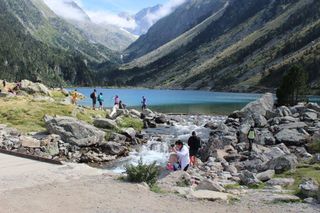
As you’d expect of the high mountains, the scenery is often jaw-droppingly dramatic. Spain’s Ordesa valley and the Cirques of Lescun and Gavarnie are the most celebrated sites, but there are views and sights to be seen in all parts. The Cathar castles of the eastern Pyrenees are so eyrie-like that you’re left wondering how they managed to build them more than 800 years ago.
There are wonders beneath the ground too, notably the Niaux caves with their prehistoric paintings, but also huge caverns at Lombrives and an underground river at Labouiche that can be navigated via punt. At each end of the range, there are fabulous beaches and resorts, including Collioure on the Mediterranean and Biarritz on the Atlantic.
Read more about the Pyrenees in Cossins' book, A Cyclist's Guide to the Mountains: The Pyrenees. If racing is your thing, check out tips and tricks from the pros in his book Full Gas: How to Win a Bike Race – Tactics from Inside the Peloton.
Bonne route, and happy travelling!

Thank you for reading 20 articles this month* Join now for unlimited access
Enjoy your first month for just £1 / $1 / €1
*Read 5 free articles per month without a subscription

Join now for unlimited access
Try first month for just £1 / $1 / €1
Peter Cossins has been writing about professional cycling since 1993, with his reporting appearing in numerous publications and websites including Cycling Weekly, Cycle Sport and Procycling - which he edited from 2006 to 2009. Peter is the author of several books on cycling - The Monuments, his history of cycling's five greatest one-day Classic races, was published in 2014, followed in 2015 by Alpe d’Huez, an appraisal of cycling’s greatest climb. Yellow Jersey - his celebration of the iconic Tour de France winner's jersey won the 2020 Telegraph Sports Book Awards Cycling Book of the Year Award.
-
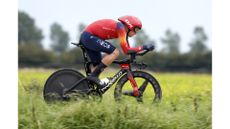 Overachiever: Cameron Wurf competed in the Amstel Gold, La Flèche Wallonne and an Ironman, all in just eight days
Overachiever: Cameron Wurf competed in the Amstel Gold, La Flèche Wallonne and an Ironman, all in just eight daysCameron Wurf is both a member of Team Ineos Grenadiers and an accomplished professional long course triathlete who has racked up numerous World Tour and Ironman race finishes across his career.
By Kristin Jenny Published
-
 The tech nerd's guide to the perfect coffee
The tech nerd's guide to the perfect coffeeJoe on Joe. What does it take to make a fine mug of Joe? We sent Joe Baker to find out.
By Joe Baker Published
-
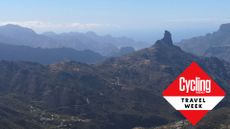 Cycling in Gran Canaria: the diverse island that should be next on your 'to do' list
Cycling in Gran Canaria: the diverse island that should be next on your 'to do' listLooking for a winter getaway? Take a short hop to Gran Canaria where it's spring/summer conditions all year round
By Michelle Arthurs-Brennan Published
-
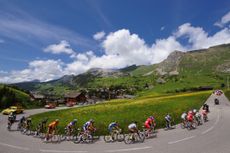 Cycling in Morzine: the next destination to tick off your bucket list
Cycling in Morzine: the next destination to tick off your bucket listNestled against the Swiss border, Morzine offers up a portion of French alps climbing with a side of off-bike resort entertainment
By Michelle Arthurs-Brennan Published
-
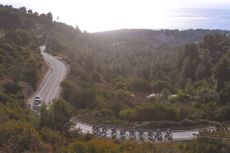 Cycling in Costa Blanca: a cyclist’s guide to Denia and Calpe
Cycling in Costa Blanca: a cyclist’s guide to Denia and CalpeLooking for a spring getaway? Mainland Spain's coastline could be the answer...
By Michelle Arthurs-Brennan Published
-
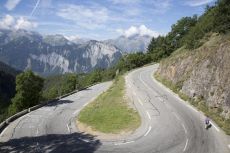 How to climb that iconic mountain, the one you’ve dreamed of
How to climb that iconic mountain, the one you’ve dreamed ofFor cyclists, there always seems to be one climb that has eluded them, and which figures highly in the imagination.
By Richard Windsor Published
-
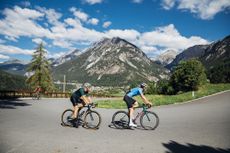 What can cyclist legally do, and not do, in Europe?
What can cyclist legally do, and not do, in Europe?Planning a trip abroad? Here's what you need to know about the law in top European destinations
By Michelle Arthurs-Brennan Published
-
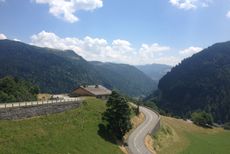 The best quick transfer destinations for your short break cycling holiday
The best quick transfer destinations for your short break cycling holidayGoing for a quick getaway? Here are some suggestions...
By Michelle Arthurs-Brennan Published
-
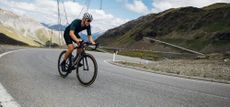 Riding to the sky above: Taking on the Passo dello Stelvio
Riding to the sky above: Taking on the Passo dello StelvioThe highest summit finish in Grand Tour history... Paul Knott headed to the Passo dello Stelvio to tick this bona fide bucket-list climb off his list
By Paul Knott Published
-
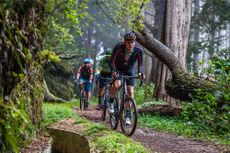 Is Madeira the ultimate adventure destination?
Is Madeira the ultimate adventure destination?If you like climbing, you’ll love Madeira
By Paul Norman Published